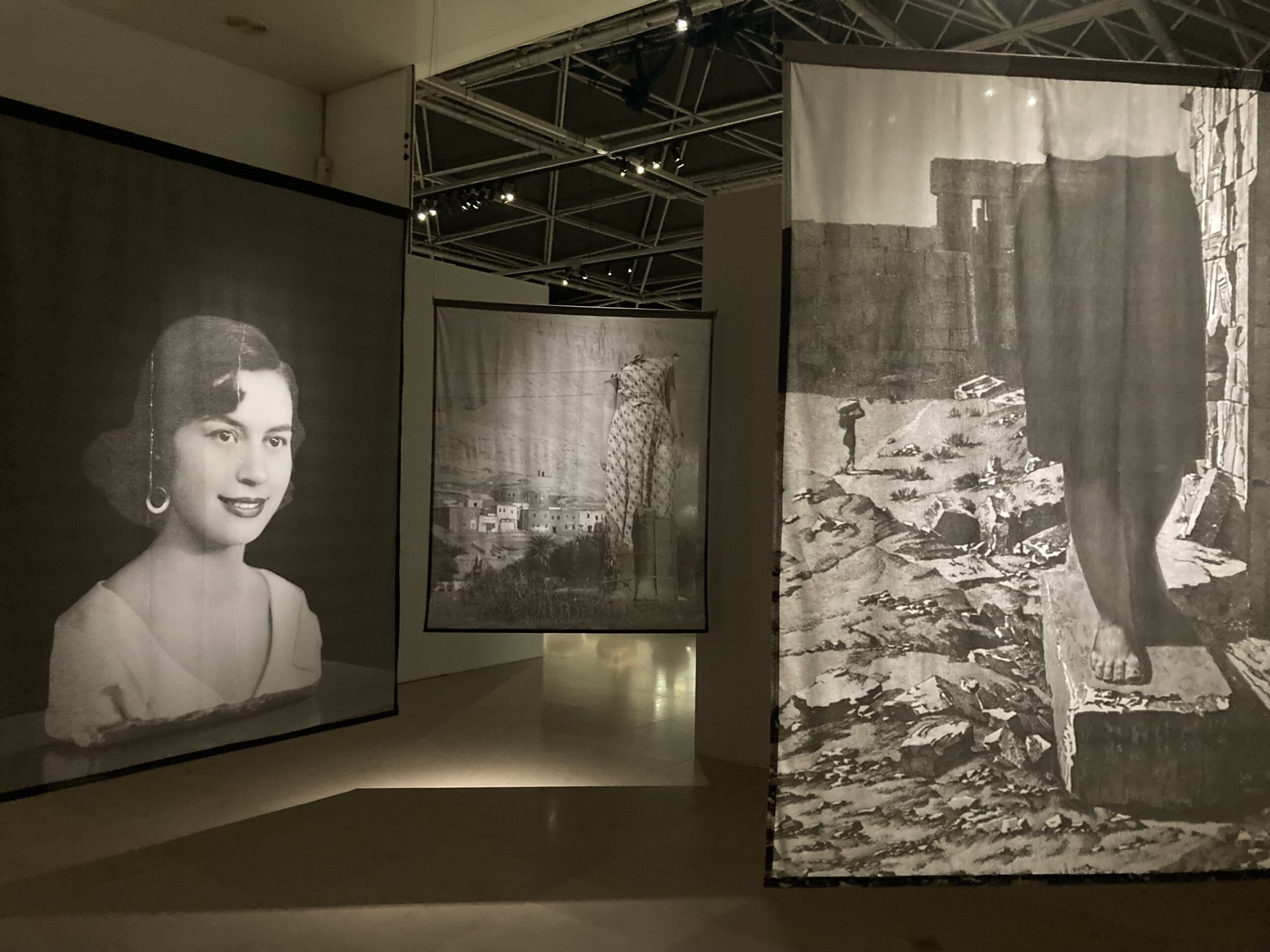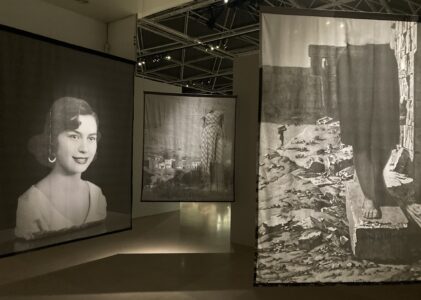There’s another universe out there where instead of becoming a medieval historian, I pursued my childhood fascination with ancient Egypt instead—I was that kid who tried to teach themselves how to write in hieroglyphs from a library book—so I made a beeline for the “Expéditions d’Égypte” special exhibition on a recent trip to Brussels. It’s a fascinating look at both some of the rich collection of artefacts from ancient Egypt that are held by the Royal Museums of Art and History—one of the largest such collections in Europe—and at the history of how these objects came to be in Belgium in the first place.
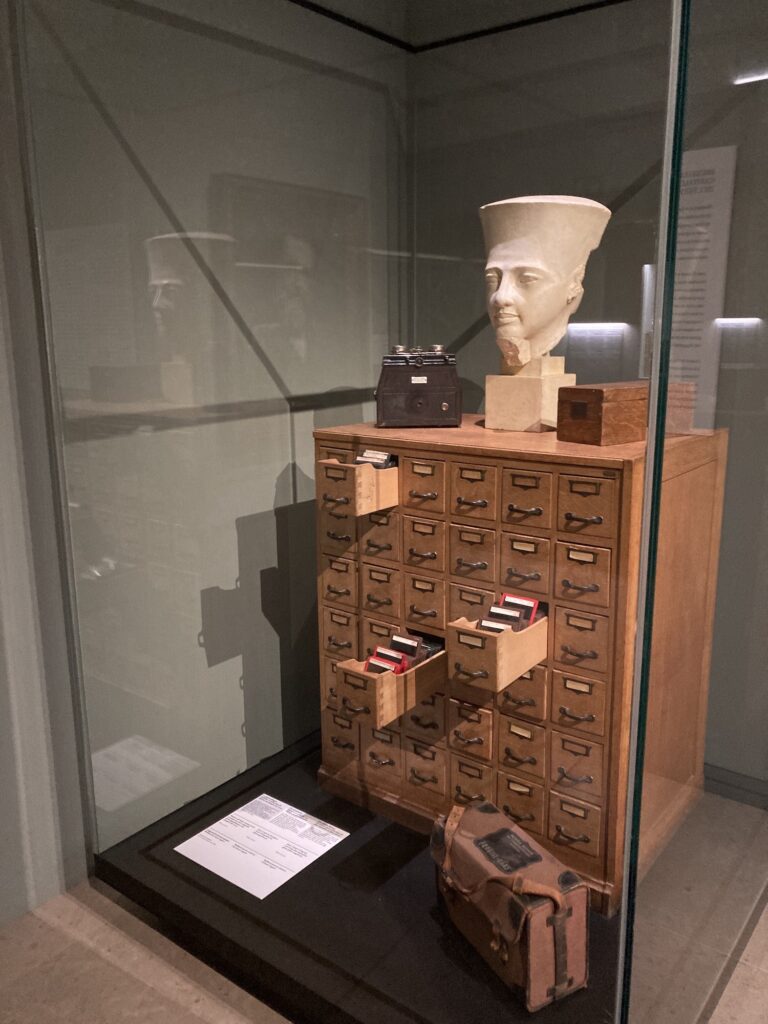
The ambitious and industrious Jean Capart (1877-1947), the “Father of Belgian Egyptology” is a key figure here, as is the Belgian royal family via the creation of the Fondation (now Association) Égyptologique Reine Élisabeth in the 1920s, named for the then-queen. Belgians were no more immune to the craze for all things Ancient Egyptian in the aftermath of Howard Carter’s discovery of the tomb of Tutankhamun than were other parts of the western world. In fact, Queen Élisabeth and her son, the future Leopold III, were present at the opening of Tutankhamun’s tomb in 1923.
The exhibition tries to contextualise the discoveries of Capart and other Belgian academics, and the museum’s collecting practices during this period, underscoring how profoundly they were shaped by widespread colonialist, imperialist, and racist ideas and structures—even something as innocuous as the packing crates in which objects were transported to Belgium had originally been used by British oil companies operating in the Middle East. There are some very beautiful and moving objects on display here: a Book of the Dead, the so-called “Lady of Brussels” statue, a tiny and carefully mummified hand adorned with a ring. But I found this contextualising aspect of the exhibition fascinating, showing as it did how what might seem like a very dry academic topic like the chronology of ancient pot production is never pursued in a vacuum. “Expéditions d’Égypte” also acknowledges the skills of the many Egyptian labourers who undertake so much of the work on a dig site, including the photographs and names of more than a dozen who have worked on Belgian-led excavations in recent years. This is a welcome shift in approach, given how these workers have largely been omitted from archaeological accounts.
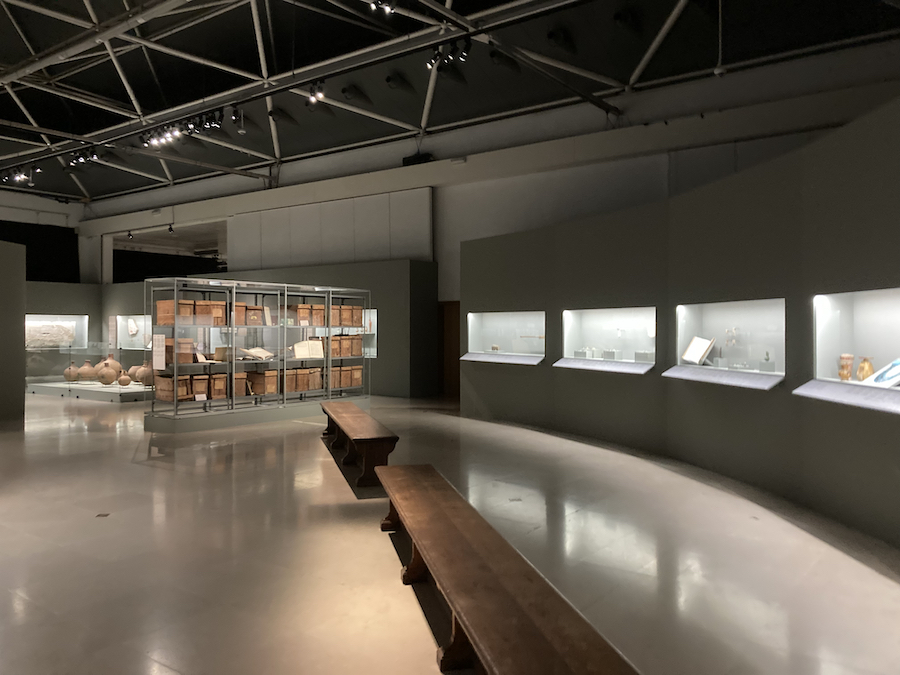
Yet there were also odd gaps in the exhibition’s willingness to reckon with the institution’s past. One of the pieces showcased was the sarcophagus of an individual from the 21st Dynasty, a scribe called Butehamun, which together with an associated mummy (possibly that of Butehamun himself—it appears that the attribution isn’t certain) was acquired by the museum in the mid-19th century from Sarah Belzoni, the widow of the pioneering Italian archaeologist Giovanni Belzoni. The mummy apparently spent a number of decades on display in the museum as a popular draw for the people of Brussels, though today the remains were only represented in the form of a photograph—not because the exhibition’s curators have qualms about the display of human remains, it seems, but because the mummy was all but destroyed in an autopsy conducted in the 1940s by the medical historian Frans Jonckheere.
While this destruction was acknowledged in the exhibition, there was no explanation or analysis offered beyond the bare fact of it. What does it mean, to purchase a set of human remains? Why then destroy it? Why then, so many decades after the mummy’s acquisition by the museum? How do we today reckon with the fact that Jonckheere’s actions would have been seen by an Ancient Egyptian—and undoubtedly by Butehamun himself—as the moral equivalent of a murder, as extinguishing Butehamun’s ability to exist in the afterlife? The preservation of the body was considered essential to the preservation of the soul. Even if you don’t share the worldview of the Ancient Egyptians, there is clearly something to be grappled with here.
That these questions remain unvoiced and unanswered sit uneasily alongside the exhibition’s goal of interrogating the history of Egyptology as a field.
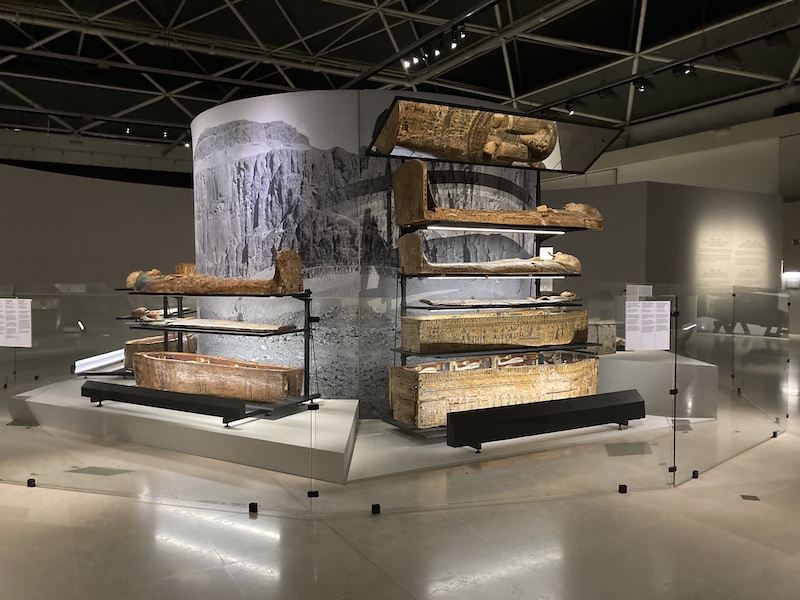
The most pointed questioning in the exhibition of Western archaeological collections of artefacts of non-Western origin, and of Western attitudes towards Egypt and its history, comes from a series of artworks by the Egyptian artist Sara Sallam. Interspersed with the rest of the exhibition, Sallam’s work both seek to criticise the colonialist and racist narratives which informed much archaeology in the 19th and 20th centuries, and to reclaim emotional links between ancient Egyptians and their modern descendants. Sallam’s love and affection for her grandmother came through so strongly in many of these pieces, such as in her photo collages like “The Fourth Pyramid Belongs To Her” (below) which transpose photographs of her grandmother onto other photos of archaeological sites and objects, or in a spoken-word piece reflecting on her final illness.
As I think most (all?) of Sallam’s pieces weren’t custom-made for this exhibition, they don’t engage specifically with the rest of it, which made it perhaps not as sharp as it could have been—how did Sallam’s contributions shape the rest of “Expéditions d’Egypte”, if at all? Nor was it always clear to me the particular audience Sallam had in mind when making her pieces: those who are visiting the museum, or those who are responsible for curating and displaying its collections. Regardless, her point about the ethical imperative to recognise the humanity of Ancient Egyptians is well-made, and one for everyone to heed.
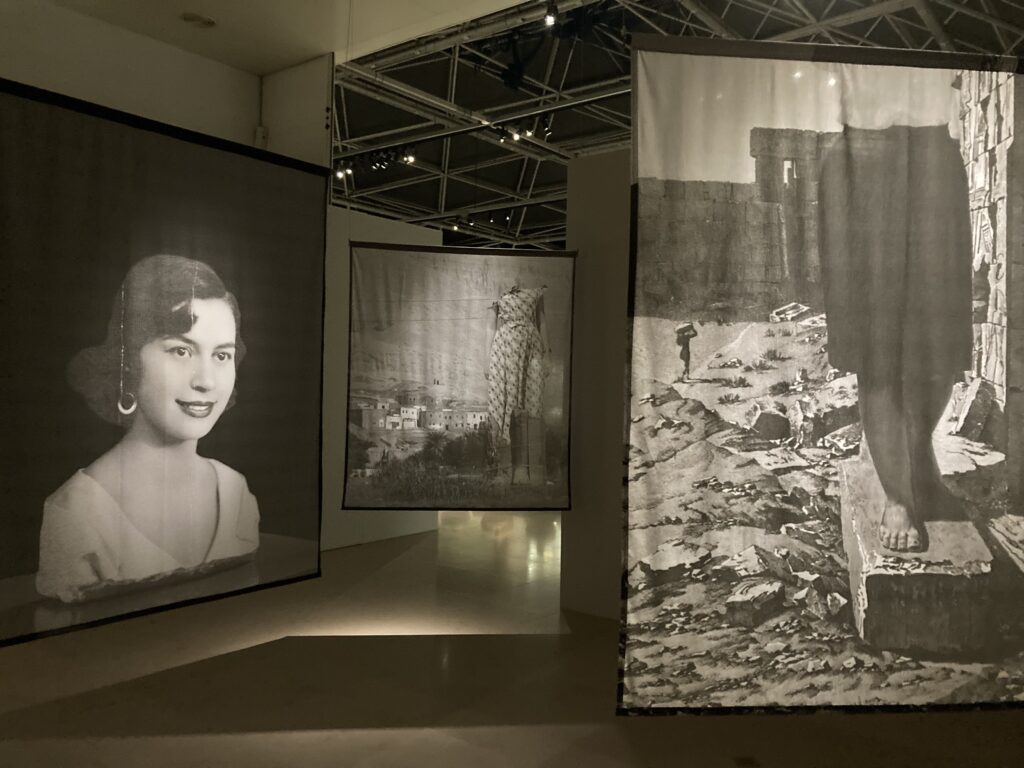
“Expéditions d’Égypte” runs through to October 1 at the Royal Museums of Art and History, Brussels.
